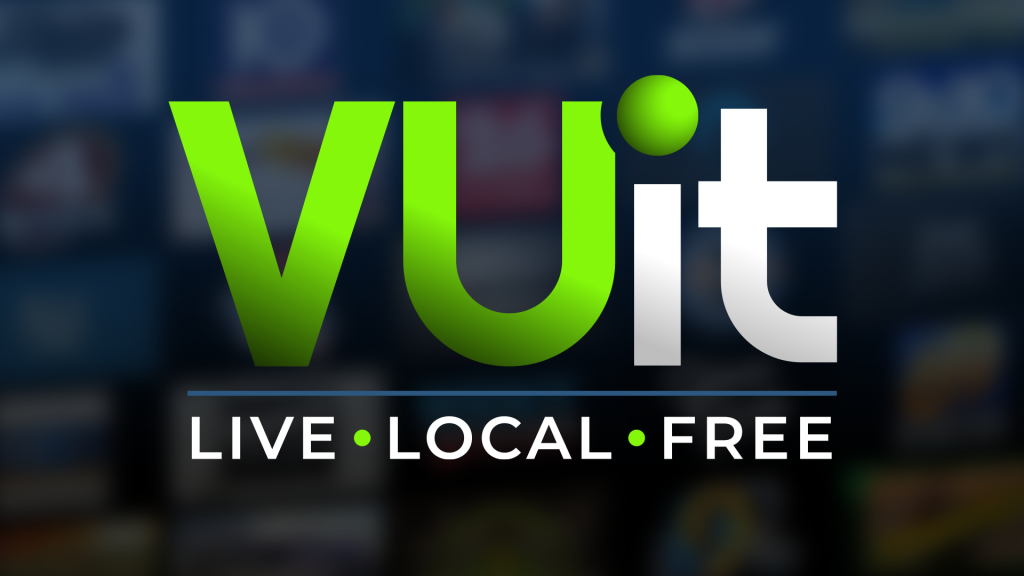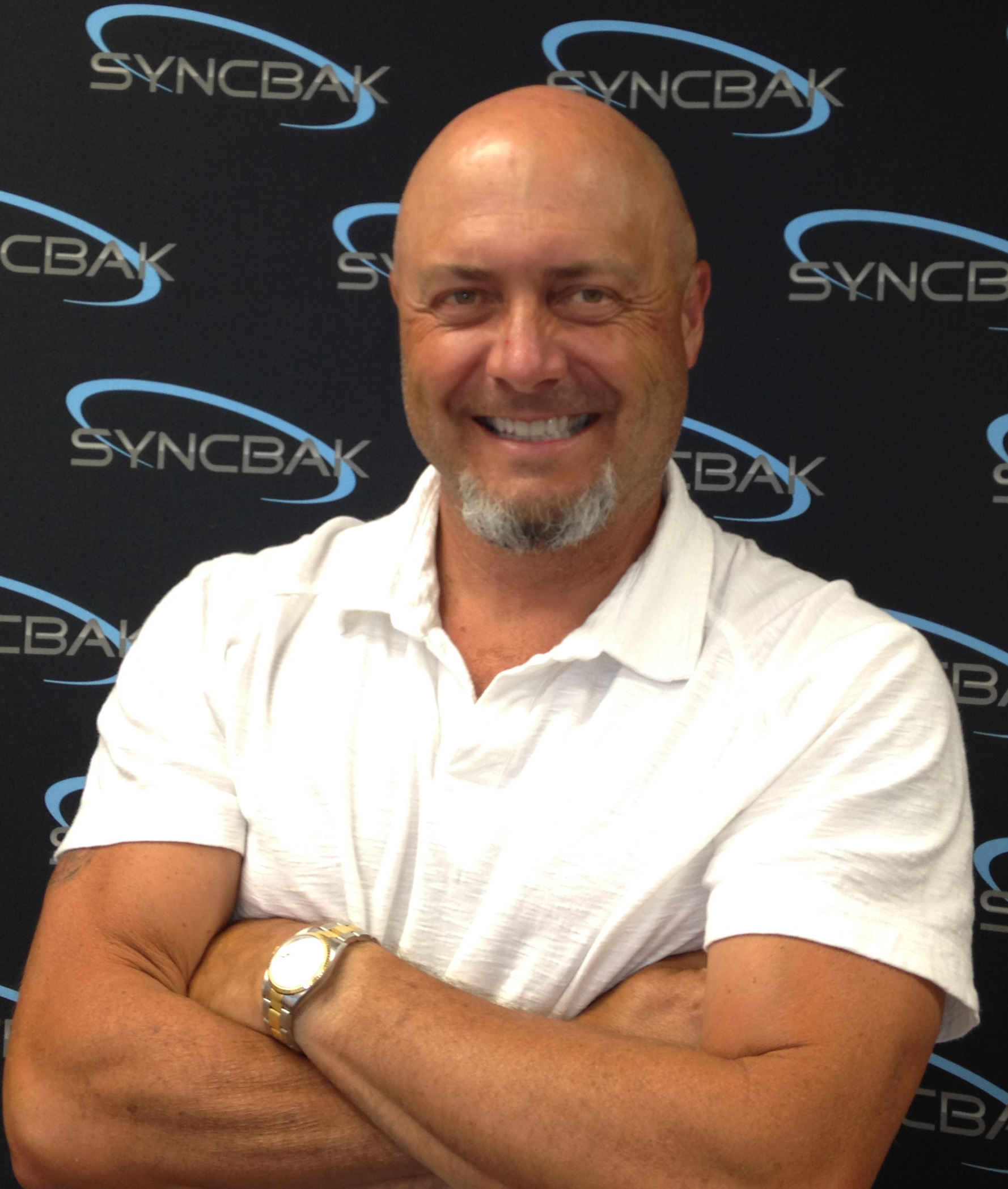Syncbak’s VUit an ‘OTT Sandbox’ for Local Broadcasters
How will the new streaming service help local TV stations monetize OTT?

WASHINGTON—Earlier this month, Syncbak, a developer of technology for live local OTT, announced the launch of VUit, an OTT platform for local broadcasters that provides a free, ad-supported national streaming service built in partnership with local television station groups, including Gray Television, Meredith and others.
TV Technology recently sat down with Syncbak founder Jack Perry and Mike Braun, senior vice president of digital media for Gray TV, a major investor in Syncbak, to discuss how VUit could change the OTT landscape for local broadcasters.
TV Technology: Jack, how did this come together, can you kind of give us the genesis of this?

Jack Perry: Yeah, I think it really came together last winter. [Gray CEO] Hilton Howell and the executive leadership team of Gray invited me to give a talk to all of their general managers in Miami. Mike and I have a shared vision that there is a ton of opportunity in the OTT space for local and hyperlocal and giving their viewers something more to watch.
Five minutes after the talk about what the future could look like for OTT we're on a roll and ready to go and the leadership team at Gray said, “we like this we want to go.” And so we developed VUit.
Mike Braun: Like Jack said, we've been talking about what the future holds for not only OTT, but local broadcasting in general, and from Gray’s perspective, we always felt Jack and his team saw the vision, usually before anybody else. That meeting just sort of brought it all together, but it was multiple years of planning to get to this stage. We needed to be ready to go to that next level, to make sure that we as broadcasters were ready, but we wanted to make sure our audience was ready for it as well, and we feel that time is right now.
TVT: So when you say this was “years in the making,” you're talking about the concept and then Jack helped bring it to reality?
Get the TV Tech Newsletter
The professional video industry's #1 source for news, trends and product and tech information. Sign up below.
MB: Yeah, absolutely. Gray and Syncbak have been working together now since 2013, so it's evolved quite a bit. It started with finding the tech partner for us to be able to bring our live streams to multiple platforms. That work started all the way back then and to me VUit has just become sort of the “cherry on top” of everything else that we've done, and it starts a whole new roadmap for us.
TVT: Jack, would you say that this kind of is like the logical evolution of SyncBak and what you originally intended it for?
JP: Yes, it really is getting back to the original vision of connecting every broadcaster to every viewer and we're very proud to power, live on many of the MVPDs. We’re equally as proud to have the ability to give broadcasters really a “sandbox,” if you will, to experiment and get their viewers something else to watch, but you're absolutely right, this is the realization of the original vision for Syncbak.
TVT: When I was reviewing VUit, the first thing that came to mind was “this is to local television like what iHeartRadio or TuneIn is for radio.”
JP: I think it is. We’re aggregating the content and giving viewers the ability to watch unique programming from across the country, but perhaps most important is it’s connecting in advertisers as well, who have really needed an on ramp to OTT for a long time. This gives the kind of level playing field for the smaller advertiser, it gives them the ability to get out and reach a viewer. If they're watching a dirt track race in Cadillac Mich., they can put their ad into that, if they're watching a snowmobile race or if they're watching a local parade or they're watching the news, now the local advertiser knows how to find the viewers and that really is kind of the essence of the deal—it is connecting broadcasters to viewers, and then advertisers into the mix as well.
TVT: Were there changes in FCC rules over the years that helped spur this along?
JP: Well you know when I originally started Syncbak I went to Capitol Hill and said “I'm going to be the first cable company that uses the internet in a private way.” And Congress kind of looked at me and said “well why don't we just let the free market work that out.”
So that's what really caused the whole notion. I don't know if it's as much as what's happening with the FCC as much as it's the technology enabling the local broadcaster to really create special and unique offerings to reach viewers. I think that's more the driver. The proof is in the pudding when you start running advertisements, and revenue is going up and the small advertisers are able to get into the mix. That's what's driving it, the technology and the ability to monetize viewing.
MB: We're now allowing our viewers to decide where is local. With us and the OTT space in general, the viewer is now deciding what's local to them. And that's the key I think about this whole thing is, we're not limited anymore to certain channels and TV grids. This allows us to have multiple channels live at all times on VUit. And it could be channels that are there forever, but it also could be what we call “pop up channels,” which become local not only in your market, but they become local for anyone that is interested in that event.
TVT: How, if any will this impact the relationship between the local station and the network when the networks themselves have launched their own OTT services?

MB: Here's the thing with that—there's going to be a lot of players in the space, there's going to be our peers in local broadcasting, and then there's going to be the national networks.
The OTT space is very big, and there's a lot of room for all of us to be in that field. I think the important part for us and local broadcasting is to focus on what we do best and not really worry too much about what the others around us are doing. There's nobody that's going to do live and local better than we will, in our marketplace. So that's where our focus is, regardless of what the national networks are doing.
We know what our viewers are looking for, and that's the way I think we have to look at it. Sure, anytime there's new programming in the space it's going to impact you in some manner, but that's why I think we really need to stay focused and stay the course on live and local.
TVT: Mike, how has Gray weathered the events of the past six months? Have there been any layoffs at your stations? And if stations are making cuts, how is that going to help you in your efforts to ramp up your local live production for VUit?
MB: At Gray, we are not downsizing our staffs. We did not do any furloughs and I'm very proud of that. I believe we are the leaders in the broadcast space, not only because of the markets we're in and how we lead in those markets, but because of our leadership and our people. I'm very proud of the fact that our senior leaders have made it very clear that they are giving back and believing in our people.
We are doing things differently due to the pandemic. After 20 years in the business, I can't believe how many Zoom meetings that we're having, and I never thought I wouldn't be traveling as much as I have in years past and that's not just me personally, but also as a company.
The thing that concerns me the most is our local advertiser. We only exist in our communities because of the strength of our advertising. And I think this is what separates us at times from national news networks. For our advertisers, they live in the same communities that we live in, right? We don't get to go in after a big event and then leave. So we're always mindful of that.
But to answer your question about investing in new local programming beyond news to fill the grid in viewing. Absolutely, you know, I don't think there's ever a cap on programming. That's what makes it very interesting here. We can have multiple programs going without the need for millions in viewership. What I mean by that is, at primetime, it's all about the ratings, how many viewers do we have sitting watching any of the networks at any given time during let's say 7-9 p.m., on a night right? When it comes to VUit, we can have thousands of programs going with just thousands of people watching what they are interested in. At that moment, and together accurately, we are talking about millions, it just it's a much different model than it is on the linear side.
JP: For years viewers have become accustomed to seeing 16 minutes of avails per hour. If we translate that into the OTT space where 15 second ad spots are dominant, 16 minutes is approximately 64 15-second ads running per hour. We're testing a lot of things here, we're not sure if 16 is the optimal maybe it's 10 but when you're taking a live broadcast the ad paths are part of the ad pods. If you take 16 minutes worth of advertising-supported programming, just for one viewer watching one hour, that one viewer is worth $3.20 per hour.
So, you look at somebody with the scale of Gray Television. One viewer watching one hour, generating $3.20 of gross revenue and you then move that against what the whole U.S. would be for them, it doesn't take long to build a massive, massive revenue machine that is serving its community and communities, outside with really great programming.
My point is, what Gray had an opportunity here with getting behind VUit and really deepening their relationship with us is they now have access to their own ‘Bamtech’ [now “Disney Streaming Services”]. We’re on the clock now, we're going to be doing the Super Bowl in February, but we've done it before, we're doing it again and every time CBS has it, we’ve got to pull 208 signals out of the affiliates pointed to the cloud and hand them off to Hulu and Fubo and others so we have the ability to scale.
But most importantly is we have the ability to keep costs very, very low. So if you might see on VUit that one of the channels we have that runs 24/7 is something called “Prospect Meadows” [a Marion, Iowa-based sports complex] during the day when there's no games going on there it's, you know, you're just watching the corn grow over the top of a baseball field.
Our costs are so low that if one viewer tunes in and watches that and we queue up 16 minutes of ads, we've just generated somewhere between $1 and $3 per hour, off of that view or watching the corn grow. And our net income on that I can tell you is in the neighborhood of 99 cents off of that $1.
So, because we have the scale, because we have the technology, we offer Gray the ability to experiment and do all kinds of different things and not have to worry about the cost and the complexity of going OTT. The reason Disney took Bamtech in house was to control the costs and control the complexity and to speed their time to market when they came up with new initiatives. And with Gray strengthening their relationship with us and getting behind VUit, it puts them in that exact same position as Disney.
TVT: Will the programming that local stations produce be exclusive to VUit, or will they also be able to show it on the local linear feed?
JP: The broadcasters have made significant investments in their news apps on their websites and they can put whatever programming to those that they want, it's all VUit-powered programming. Are we going to open it up to others? Probably not because one thing that broadcasters know is exclusivity, and they understand it, they can go to their local advertiser and say, “I'm the only game in town.” But we're not going to tell viewers that are accustomed to using websites and news apps, “hey you can't, you got to go here for now.” That wouldn't be the spirit of broadcasting so we let them pick their device, pick their destination but it'll all be VUit-powered. That’s the best way to think about it.
MB: One of the reasons this really excites us from the advertising perspective is that we're not limited to having to be a set standard across the platform. Each channel that we have on VUit, we can change on the fly, we can have a channel where we want ad pods at a certain length, and then realize by that afternoon that maybe that’s not working, we need to either scale back or scale up the changes literally instantly, there's no delay, there's no waiting.
We're not limited to what “standards” are on the linear side.
TVT: Mike, how are your member stations promoting VUit?
MB: Our stations are mentioning it at the end of their newscasts, “to stay with our digital channel, head over to VUit.” They’re also running 15 and 30-second ads. And that was really a big part of this launch, is with Gray and Heritage, and Morgan Murphy and Meredith and their stations saying, “Hey, we're on VUit!” Who better to tell the viewers to tune in than the local broadcasters?
TVT: Where does ATSC 3.0 fit into this?
JP: If there's a way to integrate with ATSC 3.0, we'll do that.
TVT: Including 4K?
JP: Yes, it's always a math problem. But of course, we can solve that.
TVT: Your new platform AdSync is also going to play an important role in VUit. Can you elaborate?
JP: AdSync is pretty simple. We start out by embedding into the station, we get hooks into traffic and automation and when we see the ad pod coming, we pull out the over-the-air ads and we put in the highest-paying ads from our dynamic ad insertion, and who will have the ads—which is what AdSync manages.
AdSync was a big part of why we're doing this with Gray because it works. The idea is that, in real time, we find the highest-paying possible ad, but let me put one caveat on that.
We tap into all of the ad networks, we are embedded with the stations to work on their ads, but the most important piece of AdSync is that it gives the local broadcaster the ability to sell ads locally that are then put into AdSync and then become central to the local viewers experience, and those are the highest paying possible ads.
Tom has covered the broadcast technology market for the past 25 years, including three years handling member communications for the National Association of Broadcasters followed by a year as editor of Video Technology News and DTV Business executive newsletters for Phillips Publishing. In 1999 he launched digitalbroadcasting.com for internet B2B portal Verticalnet. He is also a charter member of the CTA's Academy of Digital TV Pioneers. Since 2001, he has been editor-in-chief of TV Tech (www.tvtech.com), the leading source of news and information on broadcast and related media technology and is a frequent contributor and moderator to the brand’s Tech Leadership events.

